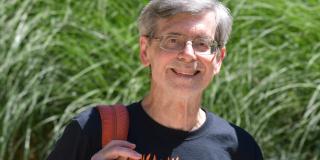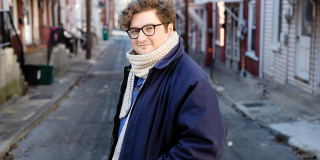Southeast Asia, like many areas of the world is experiencing rapid growth and development. This growth has affected various aspects of both the culture as well as the urban landscape in which these areas exist. Through this development, there have been both positive and negative impacts on Southeast Asia.  Brennen Stenke ’17 wanted to look further into the effects of this urbanization by exploring the architecture and urban layout of various cities through writing and photography to better understand both the problems facing the cities as well as the positive impacts that this growth has had within the region.
Brennen Stenke ’17 wanted to look further into the effects of this urbanization by exploring the architecture and urban layout of various cities through writing and photography to better understand both the problems facing the cities as well as the positive impacts that this growth has had within the region.
In December of 2015 Stenke received a Strohl Grant of $5,000 to travel to Southeast Asia to study the region.
“It was really difficult to write the proposal and I actually had to rewrite it for them to clarify what I wanted to do,” Stenke said. “But once it was approved they were really supportive of my research.”
The premise of his project was to research urbanism in Southeast Asia and present it as his senior thesis. In order to do this, he decided to use the funds to travel to Southeast Asia this past January. He travelled to Singapore, Kuala Lumpur and Bangkok, Thailand, areas he said he chose simply because they are three of the largest urban areas in southeastern Asia and also because the cities offered good contrast between their individual urban fabrics.
“I was interested in Asia specifically because Asia is not as well represented in architectural theory,” Stenke said.
Stenke said that in most of his architecture classes at Lehigh, the main focus is typically on European art and architecture as it is in most architecture theory as well. Southeast Asia piqued his interest as a senior thesis topic because the region is less accessible in some ways than.
Stenke spent one month in Asia and split the time evenly between the three cities. His thesis explores urban problems within southeast Asia, such as climate, over population and western influence, and look at how they affect the traditional architecture as well as the contemporary development. He also looked at ecological effects of urbanization in these cities.
“My two majors are architecture and environmental studies so I was trying to bring those two things together by looking into the ecological conditions in Southeast Asia in terms of how they effected the buildings there and the cities,“ Stenke said.
Through this project he hopes to be able to not only gain a better understanding of Asian architecture himself, but also to help other people understand and use his project as a platform to broaden discussion on the topic.
Prior to arriving in Asia, Stenke said he conducted extensive research about the cities he would be visiting as well as the various buildings that he wanted to observe and photograph. He had no points of contact in Asia and said he mostly used his previous research as well as Google Maps to navigate throughout the cities. Although he traveled alone, Hyun-Tae Jung, professor of architecture, coached him before he left regarding what issues he should study. Jung encouraged him to apply for the Strohl Grant, Stenke also worked with the Study Abroad Office to obtain approval for the trip and the proper documentation.
This semester, Stenke will work to compile his research and organize it in order to create the final product. While abroad, Stenke photographed cities and buildings that he encountered and plans to create a “photo essay” with photos that he took as well as written documents about his experience in southeast Asia and his observations about the urban areas he saw. He hopes to complete his thesis by May..
Stenke said that many of the conditions he noticed in Southeast Asia are ongoing and he believes that the opportunity for discussion on these topics is still expanding. He foresees possible travel back to Southeast Asia to continue his research. As well, he said that one of the downsides of his trip was that he didn’t see any rural areas of the various places he visited and that if he were to go back he would like to visit them in order to gain a better understanding of how the culture in those areas differed from culture in the city.
Previous to the work Stenke completed in Southeast Asia, in the fall of 2014, hereceived his first Strohl Grant. Strohl Grants like Stenke’s are made possible by a donation from Dale S. Strohl ’58. The grants offer students funding to encourage students to do academic research outside of the classroom with faculty supervision. The grants enable students to expand their experiences, perspectives and skills through their research. Funding from the grant can be used for travel, research supplies or other valid expenses and may be combined with other funding the student has received.
With the money he received he built an architectural installation on campus in the area behind Whitaker Lab. The goal of his project was to exercise design principles and install it in an area of campus that was generally unused in hopes of bringing more people to that space. He finished the installation a year after applying in the fall of 2015.
- Sara Blatchford '16
- Acumen Fall 2016






